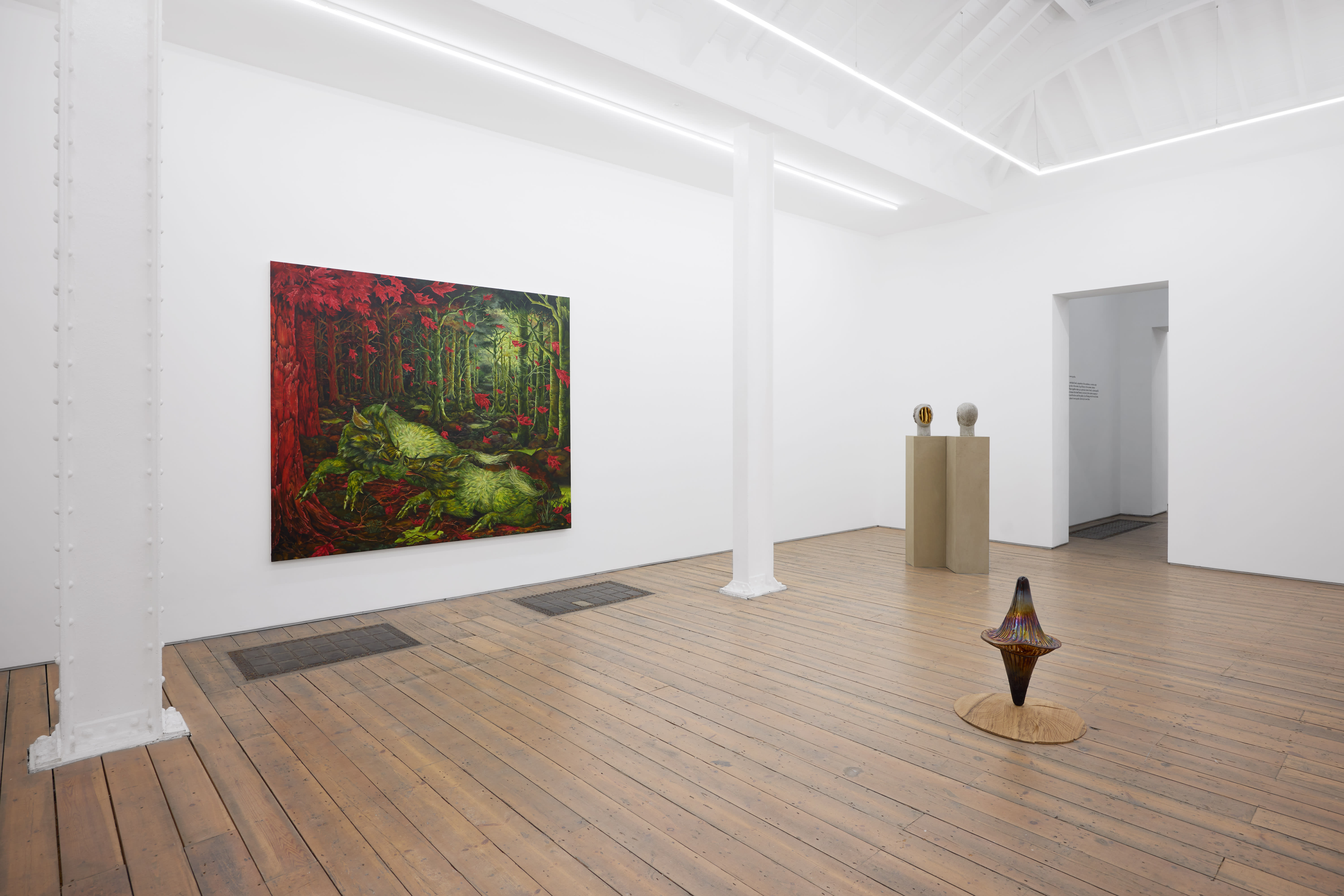In The Spell of the Sensuous (1996), US philosopher David Abram ‘suggests that civilisation began to “isolate itself from the living world” with the invention of phonetic writing,’ explains Jeremy Epstein, Co-Founder of Edel Assanti. Each Place Its Own Mind, a thematic group show opening from 17 January (until 15 March), explores how 'writing systems would direct our intellectual faculties towards producing a distinctive body of human history and knowledge,' Epstein adds. From the asemic writing works of Argentinian Mirtha Dermisache (1940-2012, Buenos Aires), ‘indecipherable sequences of semi-pictorial lines emblematic of the overall rhythm of the exhibition’, to the fluctuating iron, rose quartz and jasper installation of South African Bronwyn Katz (1993, Kimberley), ‘//xū//nana (seeds of the sweet-thorn) (2024), ‘a symbol of the earth's connection with its mining heritage’ now threatened by industrial extraction, and Your voice is always there cutting through the darkness by Emmanuel Van der Auwera (1982, Brussels), a disturbing portrait 'of parasocial relationships and digital loneliness', the showcase paints an intricate picture of our relationship with the entities of planet Earth.
What can you tell us about the process that led to Each Place Its Own Mind?
For the past five years or so we were following a handful of artists whose work explored various modes of consciousness, as alternatives to the post-enlightenment human conception. When we came across David Abram’s 1995 book The Spell of the Sensuous, which bridges western philosophy with indigenous knowledge, intellectual and anthropological histories and mysticism, we thought that Abram’s idea of a consciousness of place, defined by the sum of the perspectives of all the organic, ecological and geological presences of a specific site, would make a fascinating premise for an exhibition. Each Place Its Own Mind takes as its starting point the idea that what we call "consciousness" might have emerged as a sophisticated tool for interacting with the complex networks that make up our ecologies. The artists involved tell us where we come from and where we might be heading.
If you were to narrow the exhibition down to one unifying element, what would it be?
The profound connection between beings and the environments they exist within.

Each Place Its Own Mind, installation view, Edel Assanti, 2025. Courtesy Edel Assanti. Photo: Tom Carter.
How do the artworks on display in the exhibition seek to revive the connection between the human and the natural – or denounce its extinction?
Most of the works explore the inextricable connection between humanity and the natural world. A good example is Anna Hulačová’s sculptures: having produced the concrete busts, the artist works with live bees to produce honeycombs in the sculptures’ cavities, which become a living part of the hives during swarming season. Their honeycombs replace internal organs, symbolising a primordial connection between spirit and form. In the same room, Yukultji Napangati’s two paintings are astonishing examples of the Papunya Tula painting tradition, representing ancestral grounds through rhythmic abstract compositions. Whilst on the surface they feel almost topographic, they embody ancestral histories specifically grounded in the Western Australian landscape of the Gibson Desert that Napangati has spent most of her life within.
The showcase looks at humans’ self-professed “superiority” as the trigger behind the ecological setback. Instead, Each Place Its Own Mind promotes a vision of the world where everything, from invisible micro-organisms to animals, is interconnected. What is the artwork from the exhibition that best exemplifies it?
Marguerite Humeau’s sculpture The Brewer, 2023 exemplifies this idea eloquently. Placed in the centre of the largest room in the show, the sculpture is a symbolically charged totem that adopts a dynamic spinning top form, drawn from a possible distant future. It harbours prized elements and products of the natural world, including honey, venom, yeast and Termitomyces cultures, as though it might be a time capsule offering the key to regeneration.
What do these alternative paths to experience the natural world represent for us?
The artists in the show offer windows onto experiential perspectives that in most cases differ substantially to the visitor’s own. Take Noémie Goudal’s research into geological realities, such as the notion of deep time (usually measured in millions of years), as an example – this is a perspective we can barely fathom let alone bear witness to, yet through Goudal’s illusory compositions, we are made aware of the fragility and limitations of our own faculties, and the need to philosophical recentre for the next phase of the human story to avert catastrophe.

